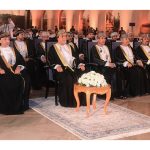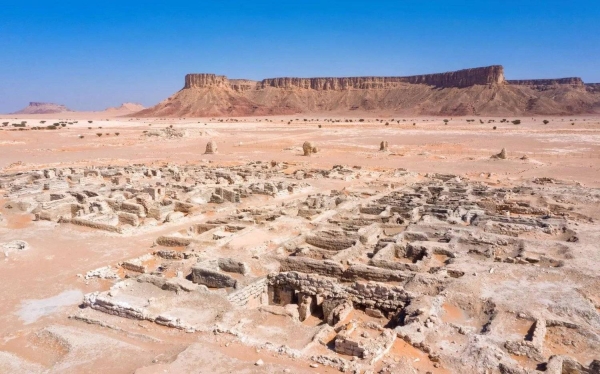The Cultural Landscape of Al-Faw Archaeological Area in Riyadh has been added to UNESCO’s World Heritage List, becoming the eighth site in Saudi Arabia to receive this recognition. Located in Wadi ad-Dawasir, the area covers 50 km² with a buffer zone of 275 km² at the intersection of the Empty Quarter desert and the Tuwaiq mountain range. The site is rich in archaeological evidence dating back to prehistoric times, including large tombs, ancient caravan city remains, an oasis with ancient irrigation systems, and significant rock art and inscriptions.
Minister of Culture Prince Badr bin Abdullah expressed pride in achieving a Vision 2030 goal by adding the Al-Faw Archaeological Area to the World Heritage List. He emphasized the significance of this registration in showcasing Saudi Arabia’s deep historical roots and its commitment to preserving global human heritage. Prince Badr also highlighted the importance of heritage preservation, education, and awareness, as well as the role of the Heritage Commission in developing national heritage assets for future generations.
The inclusion of Al-Faw brings the total number of Saudi sites on the UNESCO World Heritage List to eight, with others including Al-Hijr Archaeological Site, At-Turaif District in ad-Dir’iyah, Historic Jeddah, Rock Art in the Hail Region, Al-Ahsa Oasis, Hima Cultural Area, and ‘Uruq Bani Ma’arid Protected Area. The Al-Faw Archaeological Area is situated on ancient Arabian trade routes and was abandoned around the 5th century CE. It features a wide range of archaeological remains dating from prehistoric times to the late pre-Islamic era, showcasing the adaptation of different populations to changing environmental conditions.
The site’s key features include Palaeolithic and Neolithic tools, tapered structures, cairns, circular constructions, the sacred mountain of Khashm Qaryah, rock carvings, funerary tumuli, forts, caravanserais, and remnants of the ancient city of Qaryat al-Faw. The registration of the Al-Faw Archaeological Area on the World Heritage List underscores Saudi Arabia’s commitment to preserving its national identity and heritage, as well as its active role in the global heritage conservation efforts. It also reflects the strong support and attention given to Saudi heritage by King Salman and the Crown Prince.
The Cultural Landscape of Al-Faw Archaeological Area is a significant addition to the UNESCO World Heritage List, highlighting the importance of ancient Arabian trade routes, archaeological evidence, and cultural heritage in Saudi Arabia. The site’s diverse range of archaeological remains, including tombs, ancient city remains, irrigation systems, and rock art, offers valuable insights into the region’s history and the adaptation of different populations to changing environmental conditions over the centuries. The registration of Al-Faw on the World Heritage List is a testament to Saudi Arabia’s commitment to preserving its rich heritage and contributing to global efforts in heritage conservation. Prince Badr bin Abdullah emphasized the importance of heritage preservation, education, and awareness in ensuring the sustainability of national heritage assets for future generations.
The addition of the Al-Faw Archaeological Area to the UNESCO World Heritage List is a significant achievement for Saudi Arabia, showcasing the country’s deep historical roots and its role in preserving global human heritage. The site’s diverse archaeological evidence dating back to prehistoric times, including tombs, ancient city remains, irrigation systems, and rock art, highlights the region’s rich cultural and historical significance. The registration of Al-Faw on the World Heritage List aligns with Saudi Vision 2030’s emphasis on the importance of national identity and heritage preservation, reflecting the Kingdom’s commitment to safeguarding its heritage for future generations. Prince Badr bin Abdullah highlighted the significant support and attention given to Saudi heritage by King Salman and the Crown Prince, underscoring the country’s dedication to preserving its cultural heritage and contributing to global heritage conservation efforts.











